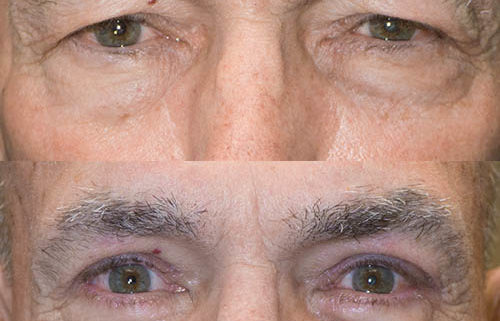I interact with hundreds of patients a week, both in clinic and online. A certain group of patients stand out due to their seeking out treatment for flaws that neither I nor my staff can see. Body Dysmorphic Disorder (BDD) has been well-reported on in the news over the past few years and I see many patients who suffer from this problem. According to the DSM V, which describes psychiatric disorders, body dysmorphic disorder is characterized by an obsession with some non-existent or trivial defect in your appearance. This pre-occupation affects other parts of your life, like personal relationships and confidence. About 1 in 50 people suffer from BDD, which in this country means about 6 million people are affected.
Signs & Symptoms
According to the International OCD Foundation, people with body dysmorphic disorder show characteristic signs, such as:
- Constantly comparing themselves to other people.
- Covering up or camouflaging parts of their body they dislike, including repetitive behavior to ensure they are covered.
- Frequently checking their appearance in a mirror.
- Constant grooming such as reapplying make-up, or adjusting hair.
- Changing their clothes multiple times during the day.
- Excessive tanning, usually to conceal some skin defect they perceive.
- Keeping your obsessions secret due to shame.
- Avoiding social situations where others might see their “flaws”
In this age of omni-present cell phone cameras and constant posting of selfies, I have seen a huge increase in people coming in to the office with hundreds or even thousands of self portrait images. Both men and women will pull out their phone and scroll through endless streams of images of themselves, looking for that photo that shows the flaw that is causing them so much stress. In most cases, I can’t see the flaw until it is pointed out to me (and my job is identifying flaws in people’s appearance!) I also see daily postings on doctor/patient engagement sites such as RealSelf.com, where patients can upload photos and ask surgeons to comment on what procedures they may need. A large number of these images are of completely normal looking, mostly young individuals, who use words like “terrible”, “horrible”, “nasty” and so on to describe their appearance. It is really heartbreaking to see how little they see in themselves when, from a strangers perspective, they look like beautiful human beings.
My biggest challenge with patients I feel have body dysmorphic disorder is in redirecting their concerns away from looking negatively at their appearance. I want to just grab their face in both hands, look them in the eyes and say, “You look just like everybody else, and nobody is more critical of you than you.” I’ve tried this approach, minus the face grab, in different ways, but it seems to fall on deaf ears. Patients don’t come to hear that nothing is wrong with them. They’re convinced something is wrong and they just want me to confirm that sentiment and supply the fix. Almost universally, I turn them away and recommend nothing, telling them any surgery could only make them less beautiful, any surgery would only add scars to now perfect skin. Sometimes they thank me for my honesty, but I don’t always believe them.
My advice to anyone struggling with BDD is to first reach out for help. Talking with a therapist, psychologist or psychiatrist can be very helpful in identifying the problem and working toward a solution that doesn’t involve chasing some unattainable perfect body. If you aren’t ready to get external help, fight the urge to constantly self-assess. Rather than take photos of yourself, identify beautiful things in the world that inspire you and photograph them instead. Surround yourself with positive people who bring you up with compliments and service, rather than judge you for being you. And really listen when your family, friends, or even your doctor tell you that you are beautiful. Beauty is a lot bigger than any one body flaw, as we all have many. I see flaws in any beautiful person, which is great only because it reminds me that they are human just like me.



